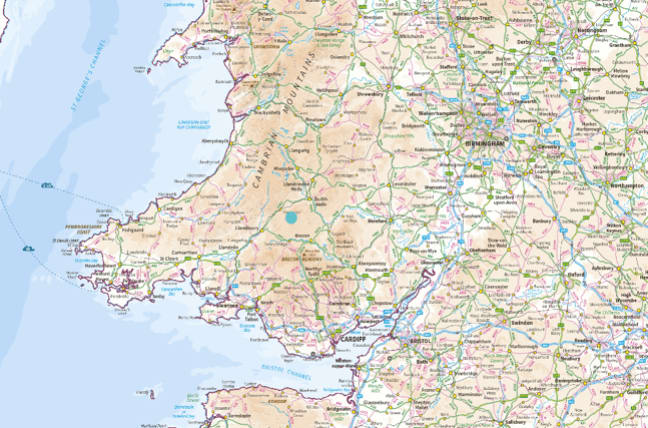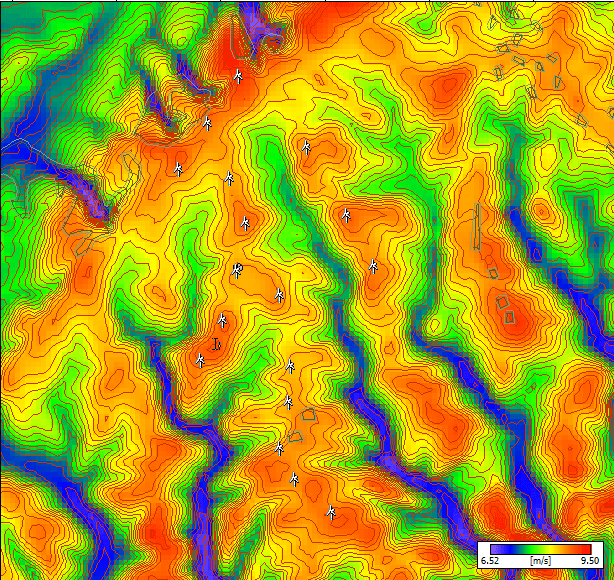What do we want? Wind. Where do we want it? Wales.
Follow articleHow do you feel about this article? Help us to provide better content for you.
Thank you! Your feedback has been received.
There was a problem submitting your feedback, please try again later.
What do you think of this article?
Why Wind?
Wind turbines - giants of steel and concrete that increasingly line the horizon, spinning steadily to keep the lights on in Britain for years to come. Last week we looked at what it actually takes to turn wind into electricity and planned and designed a complete wind turbine. We are a team of four students from the University of Glasgow and Strathclyde who, as part of the Equate Wind Farm project, spent a whole week listening to various lectures by experts from the wind industry and were able to put the knowledge gained directly into practice. The team consists of Felix, Nour, Mairéad and Shaun.
So, what needs to be done to make a wind turbine produce electricity at some point? Well, at the beginning of every wind farm there is a lot of planning, which in reality takes not just a week, but usually several years. It starts with the search for a suitable location. We have done that too. Out of five different locations across the UK, we had to choose the best one. We did this based on a number of important factors. Of course, it's best to build a wind farm where no one lives, so as not to disturb anyone. Because as sustainable as wind power may be, there are still undesirable effects: shadow Flickr (moving shadows cast by the rotor blades) or noise can affect the health of humans and animals. And while we're on the subject: local residents are often not exactly thrilled about wind turbines. Who likes having such a huge thing on their doorstep? So without talking to the local communities and getting everyone on board, it doesn't work.
Another important issue is environmental protection. Not only birds and bats but also animals on the ground should be affected as little as possible. Of course, you can't put a wind farm in a protected area either. Then there are a number of other things to consider, such as excavation sites and forests. So if there is still a place left, then you can start. But how do you actually get started?
Technical and financial planning go hand in hand. The number and size of the wind turbines as well as the locations of the individual turbines have to be determined. Of course, the most cost-effective option should always be weighed up. It is not necessarily the most and largest wind turbines that make financial sense. But how do you actually calculate the yield of a wind farm? Well, it's not that simple. The wind doesn't always blow and when it doesn't, there is no electricity, no electricity - no money. So there's a bit of risk involved, but that's what makes it so exciting!
Mostly, one relies on measured data from nearby plants, models or data from the so-called wind atlas. After all these calculations, hopefully, a plausible figure comes out in the end.
We have chosen Wales as our location, more precisely an area near the Brecon Beacon National Park, which is why our company is called Awel y Ddraig - dragons breeze. We had a lot of fun this week and hope that we were able to promote the topic of wind power a little further. Hopefully, the dragon breeze will turn the blades of Awel y ddraig!
Location Justification

The site is in Mynydd Epynt and sits on 15km2 of peatland just outside the Brecon Beacon National Park. We opted for this location as it has a great combination of high wind speeds, low population density and terrain with a low roughness index.
We used the online MagicMaps to evaluate the surrounding area and retrieve data on cultural heritage sites, wildlife species, local residencies, landscape and terrain.
After deeming the site suitable, we were able to use WaSP software to calculate energy output for turbines depending on the wind conditions in specific locations. We used the software to move turbines around the location until we had obtained optimal results for power generated.
Environmental Impact
The area has a large bat population including common pipistrelle, Brown long-eared, Natterer’s and noctule bats.
To ensure that we protect as many of these as possible, we are committing to the use of ultrasonic boom boxes that are used to repel bats. These boxes transmit sound at ultrasonic frequencies that can help deter bats. Bats also typically prefer to fly in weak winds, so leaving turbines dormant at lower wind speeds — known as raising the "cut-in speed" at which they begin generating power — can save lives, too.
Social Impact
This development has the potential to impact residents, hill walkers, farmers, and many other groups associated with the land. Our social impact strategy aims to codesign the development with these key stakeholders to ensure a development that is fair to all.
One negative impact of wind farms, in general, is the potential effects on the local landscape. However, we have strategically placed our wind turbines to minimise detriments to the landscape, placing them away from local monuments and areas of beauty.
Residents could also be affected by potential noise pollution or shadow flicker. However, our proposed site maintains a distance of at least 1.5km away from residences, businesses, or schools, a distance over 10 times the rotor distance for the turbine model selected. We have placed the turbines away from residential areas to ensure the development is not “on the doorsteps” of those in the local area.
Another potential social detriment that might be associated with this development is increased traffic and disruption to residents. We will mitigate these impacts by ensuring any necessary work is agreed upon with the local community far in advance and is done off-site where possible to minimise traffic and disruption.
However, one positive impact of this development is increased job opportunities and revenue for those living in the area. The local area is designated E2, meaning it comprises mainly rural villages where there may be a lack of employment opportunities within the renewable energy sector. Our wind farm will provide these opportunities during construction and maintenance.
Financial Feasibility
The wind farm is expected to be built within 9 months and three months will be taken to carry out an Environmental Impact Assessment. This means that the wind farm shall be completed within one year.
The erection of wind turbines is not only beneficial to the environment and supplying national power demands, but will also allow Awel y Ddraig to make a profit thus supporting growth in the renewables sector. This profit will be used to subsidise electricity costs for the local community as well as a grant of £475,000 assigned annually to the community. This is a token of appreciation to the local community for their kindness and acceptance of this project. The aim is that once the wind farm has broken the break-even mark, the company will give back to the community either through discounts on monthly or yearly electricity bills.



